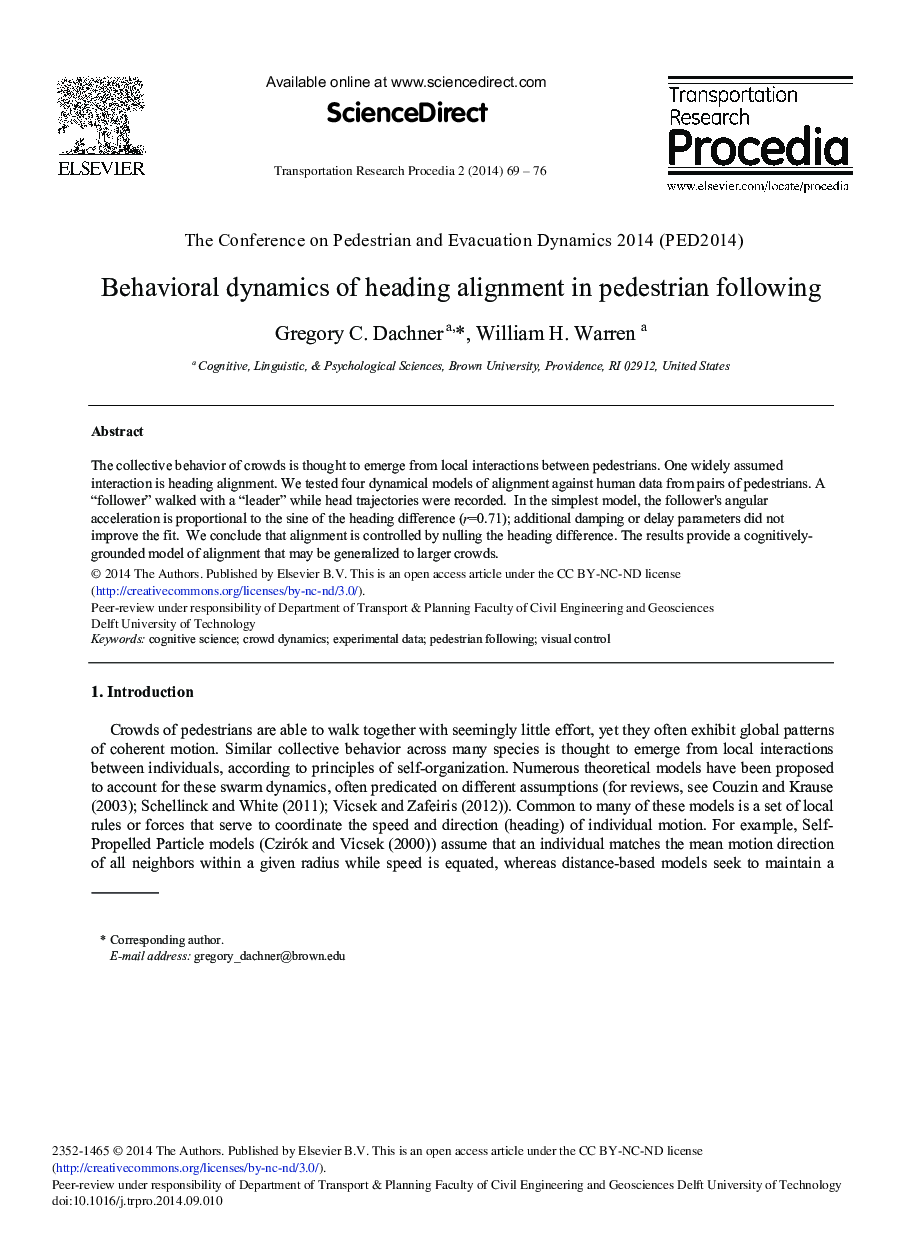| Article ID | Journal | Published Year | Pages | File Type |
|---|---|---|---|---|
| 1106667 | Transportation Research Procedia | 2014 | 8 Pages |
Abstract
The collective behavior of crowds is thought to emerge from local interactions between pedestrians. One widely assumed interaction is heading alignment. We tested four dynamical models of alignment against human data from pairs of pedestrians. A “follower” walked with a “leader” while head trajectories were recorded. In the simplest model, the follower's angular acceleration is proportional to the sine of the heading difference (r=0.71); additional damping or delay parameters did not improve the fit. We conclude that alignment is controlled by nulling the heading difference. The results provide a cognitively- grounded model of alignment that may be generalized to larger crowds.
Related Topics
Social Sciences and Humanities
Social Sciences
Safety Research
